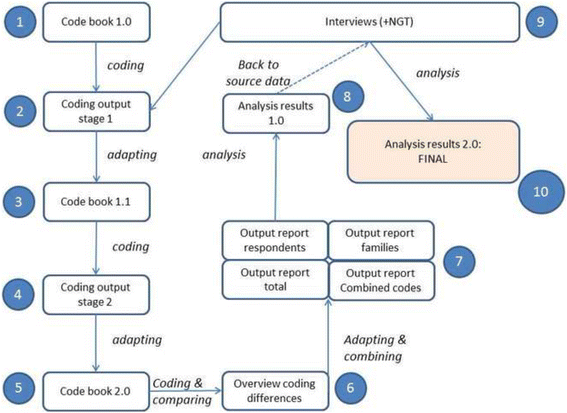Local professionals' perceptions of health assets in a low-SES Dutch neighbourhood: a qualitative study
- PMID: 28697770
- PMCID: PMC5506671
- DOI: 10.1186/s12889-017-4555-6
Local professionals' perceptions of health assets in a low-SES Dutch neighbourhood: a qualitative study
Erratum in
-
Erratum to: BMC Public Health, Vol. 18.BMC Public Health. 2017 Sep 22;17(1):736. doi: 10.1186/s12889-017-4709-6. BMC Public Health. 2017. PMID: 28938882 Free PMC article. No abstract available.
Abstract
Background: Asset-based approaches have become popular in public health. As yet it is not known to what extent health and welfare professionals are able to identify and mobilise individual and community health assets. Therefore, the aim of this study was to understand professional's perceptions of health and health assets.
Methods: In a low-SES neighbourhood, 21 health and welfare professionals were interviewed about their definition of health and their perceptions of the residents' health status, assets available in the neighbourhood's environment, and the way residents use these assets. A Nominal Group Technique (NGT) session was conducted for member check. Verbatim transcripts of the semi-structured interviews were coded and analysed using Atlas.ti.
Results: The professionals used a broad health concept, emphasizing the social dimension of health as most important. They discussed the poor health of residents, mentioning multiple health problems and unmet health needs. They provided many examples of behaviour that they considered unhealthy, in particular unhealthy diet and lack of exercise. Professionals considered the green physical environment, as well as health and social services, including their own services, as important health enhancing factors, whereas social and economic factors were considered as major barriers for good health. Poor housing and litter in public space were considered as barriers as well. According to the professionals, residents underutilized neighbourhood health assets. They emphasised the impact of poverty on the residents and their health. Moreover, they felt that residents were lacking individual capabilities to lead a healthy life. Although committed to the wellbeing of the residents, some professionals seemed almost discouraged by the (perceived) situation. They looked for practical solutions by developing group-based approaches and supporting residents' self-organisation.
Conclusions: Our study shows, firstly, that professionals in the priority district Slotermeer rated the health of the residents as poor and their health behaviour as inadequate. They considered poverty and lack of education as important causes of this situation. Secondly, the professionals tended to talk about barriers in the neighbourhood rather than about neighbourhood health assets. As such, it seems challenging to implement asset-based approaches. However, the professionals, based on their own experiences, did perceive the development of collective approaches as a promising direction for future community health development.
Keywords: Asset-based approach; Low-SES; Neighbourhood; Perceptions; Positive health; Professionals.
Conflict of interest statement
Ethics approval and consent to participate
All interviewees were informed in writing about the aim of the study. All gave their verbal permission for the information in the interviews to be used for scientific research, subject to anonymity. The interview transcripts contain no personal data, nor does the paper. All participants were provided with the paper to ensure their anonymity was respected.
The study protocol was reviewed by the Clinical Expertise Centre of the National Institute for Public Health and the Environment. Based on this review, they determined that the research plan does not fall under the scope of the Dutch law on medical research involving humans (WMO).
Consent for publication
Not applicable.
Competing interests
The authors declare that they have no competing interests.
Publisher’s Note
Springer Nature remains neutral with regard to jurisdictional claims in published maps and institutional affiliations.
References
-
- Alison M, Gord C. From clients to citizens: asset-based community development as a strategy for community-driven development. Dev Pract. 2003;13(5):474–486. doi: 10.1080/0961452032000125857. - DOI
-
- Morgan A, Ziglio E. Revitalising the evidence base for public health: an assets model. Promot Educ. 2007;14(Suppl 2):17–22. - PubMed
-
- Foot J, Hopkins T. A glass half-full: how an asset approach can improve community health and well-being. In. London: IDeA; 2010.
-
- Dunston R, Lee A, Boud D, Brodie P, Chiarella M. Co-production and health system reform – from re-imagining to re-making. Aust J Public Adm. 2009;68(1):39–52. doi: 10.1111/j.1467-8500.2008.00608.x. - DOI
-
- Taylor J, O'Hara L, Barnes M. Health promotion: a critical salutogenic science. International Journal of Social Work and Human Services Practice. 2014;2(6):283–290.
MeSH terms
LinkOut - more resources
Full Text Sources
Other Literature Sources
Medical
Research Materials


